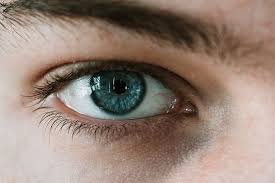What is a Contact Lens?
A contact lens is a thin, curved and transparent device made of high-quality materials such as silicone hydrogel or rigid gas permeable (RGP) materials. It is precisely shaped to fit over the cornea which is the front surface of the eye providing vision correction for refractive errors like nearsightedness, farsightedness, astigmatism and presbyopia.

Advantages of Contact Lenses
Contact lenses offer several advantages over traditional eyeglasses:
1. Natural and Unobstructed Vision
Contact lenses provide a wider field of view compared to eyeglasses. They move with your eyes allowing for a more natural and unobstructed visual experience. There are no frames to block your peripheral vision providing a clearer view of the world around you.
2. Enhanced Aesthetics
Contact lenses are virtually invisible when worn allowing your natural appearance to shine through. They do not alter your facial features or obstruct your eyes enhancing your overall aesthetic appeal.
3. Active Lifestyle Freedom
Contact lenses provide greater freedom and convenience for individuals with active lifestyles. They do not fog up, slip down the nose or get in the way during physical activities or sports. With contact lenses you can enjoy clear vision without the worry of glasses falling off or breaking.
4. Clear and Stable Vision
Contact lenses sit directly on the cornea offering a more precise and stable vision correction compared to eyeglasses. They move with your eyes providing consistent vision even when looking in different directions.
5. Flexibility and Variety
Contact lenses come in various types and designs to cater to different vision needs and preferences. Whether you choose daily disposables, monthly lenses, toric lenses for astigmatism or multifocal lenses for presbyopia there is a contact lens option available to suit your requirements.
Disadvantages of Contact Lenses
While contact lenses offer many advantages, it’s important to consider their potential drawbacks:
1. Risk of Eye Infections
Improper care, handling or wearing of contact lenses can increase the risk of eye infections. It is crucial to follow proper hygiene practices such as cleaning and disinfecting lenses as instructed by your eye care professional to minimize this risk.
2. Dry Eyes and Discomfort
Some individuals may experience dryness, discomfort or irritation when wearing contact lenses. This is more common with certain lens materials or in environments with low humidity. Using lubricating eye drops recommended by your eye care professional can help alleviate these symptoms.
3. Need for Proper Maintenance
Contact lenses require regular cleaning, disinfecting and proper storage to maintain eye health. Failure to follow the recommended cleaning and replacement schedule can lead to complications or reduced vision quality.
4. Cost Considerations
Contact lenses can be more expensive than traditional eyeglasses especially if you opt for specialized lenses or daily disposables. Additionally, there are costs associated with lens solutions, cases and regular follow-up visits to your eye care professional.
5. Learning Curve and Adaptation
For some individuals there may be a learning curve and adaptation period when transitioning to contact lenses. Inserting, removing and handling the lenses correctly may initially require practice and patience. It’s important to follow your eye care professional’s guidance and seek assistance if needed.
Contact lenses offer numerous advantages including natural vision, enhanced aesthetics and flexibility for an active lifestyle. However, they also come with potential disadvantages such as the risk of eye infections, dryness and the need for proper maintenance. It’s important to weigh the pros and cons, consider your lifestyle and consult with your eye care professional to determine if contact lenses are the right choice for you.






